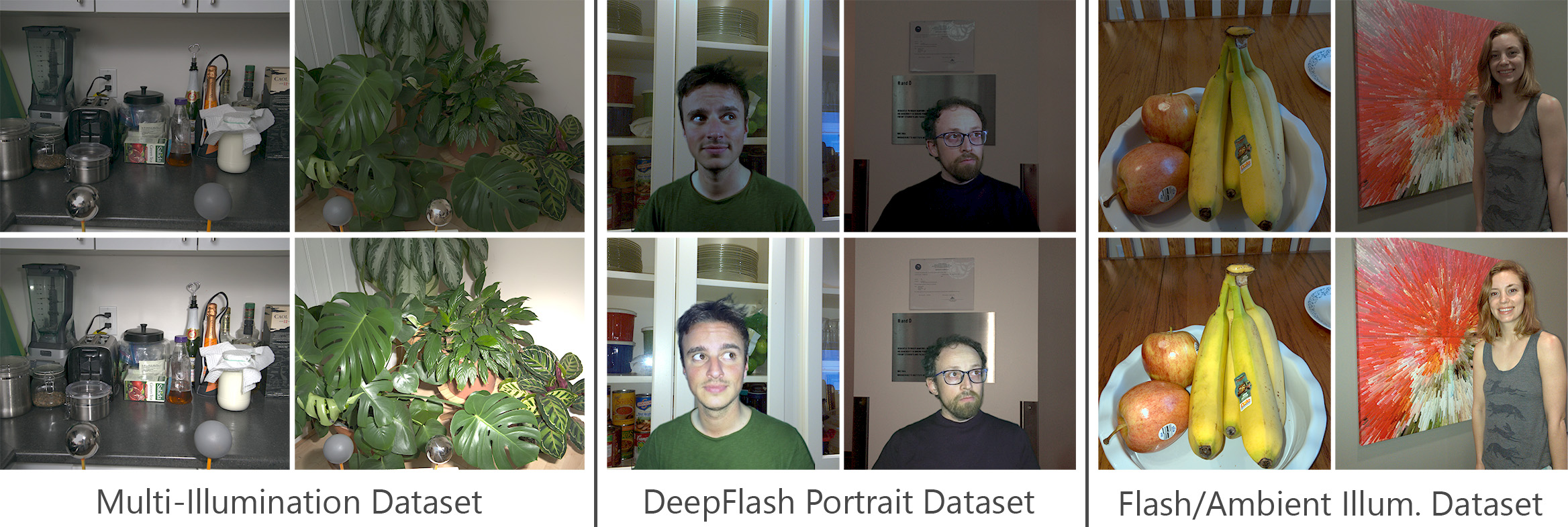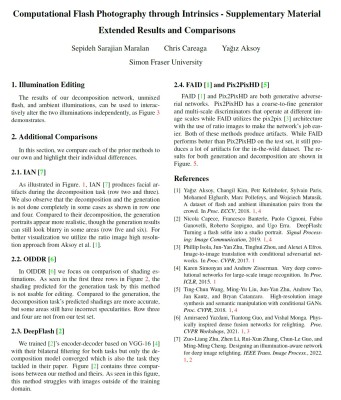
We combine and extend existing flash/no-flash datasets to create a diverse set of real-world flash/ambient pairs suitable for training deep networks. Our dataset is constructed from three existing datasets - The Multi-Illumination Dataset (MID), The Flash and Ambient Illuminations Dataset (FAID), and the Deep Flash Portrait Dataset (DPD). We propose a pipeline for compositing portraits from DPD onto backgrounds from FAID, and discuss multiple considerations for normalizing and augmenting flash/no-flash data.
The Dataset
We address the challenge of obtaining large-scale datasets that are appropriate for training deep networks to perform flash-related tasks in real-world scenarios. Although several small-scale datasets have been suggested in prior studies, none of them offer sufficient data to generalize to images captured in natural settings. To overcome this limitation, we combine and extend three existing datasets: The Multi-Illumination Dataset (MID), The Flash and Ambient Illuminations Dataset (FAID), and the Deep Flash Portrait Dataset (DPD). We propose a method for harmonizing and compositing portrait images from DPD onto plausible backgrounds from FAID. Additionally, we explain our procedure for performing brightness normalization to ensure consistent illumination intensity across datasets. Finally, we discuss strategies for data augmentation, including randomization of backgrounds and ambient color temperature.
Implementation
White Paper
 |
BibTeX
author={Sepideh Sarajian Maralan and Chris Careaga and Ya\u{g}{\i}z Aksoy},
title={Computational Flash Photography through Intrinsics},
journal={Proc. CVPR},
year={2023},
}
CVPR Publication








